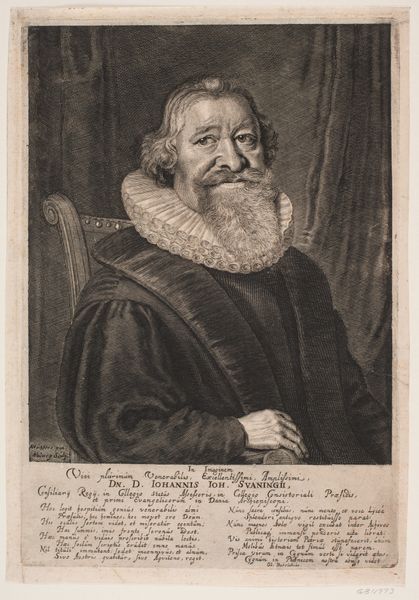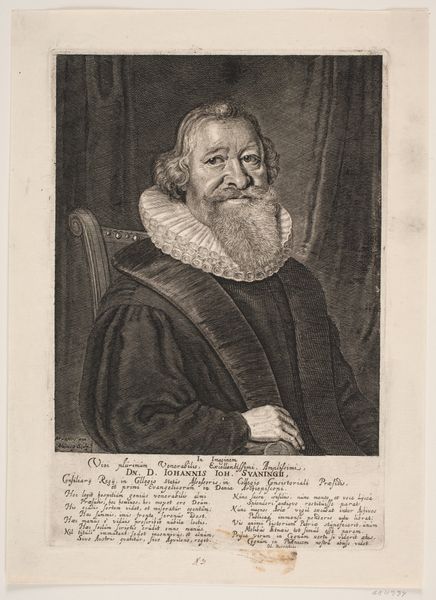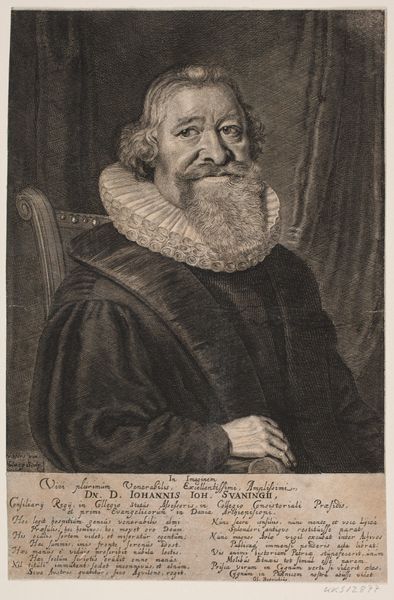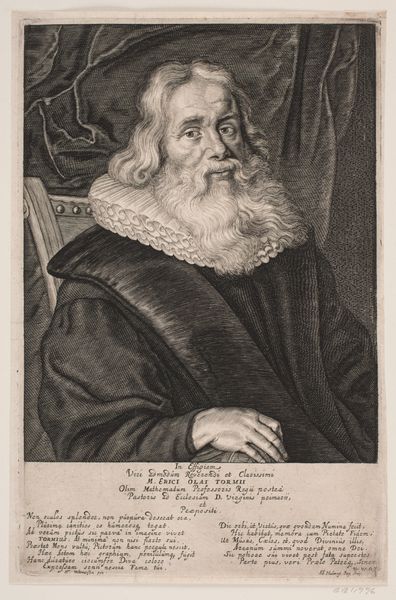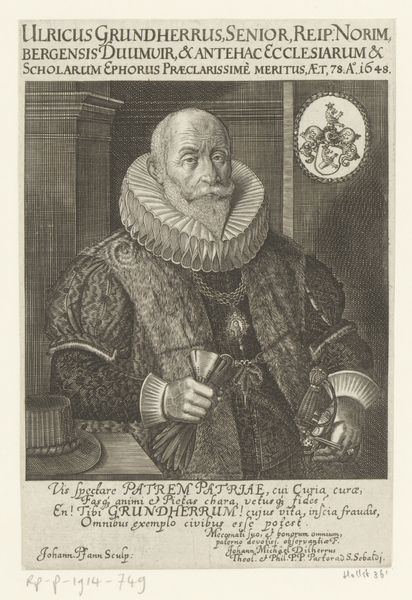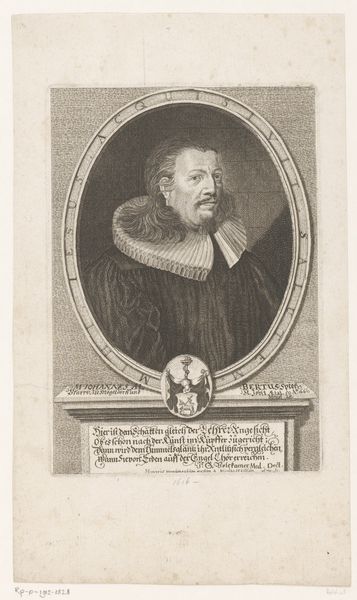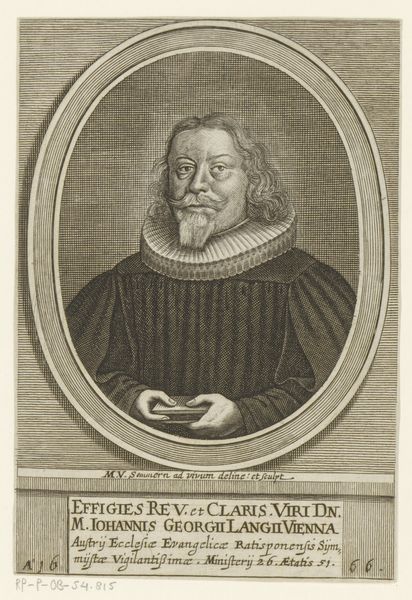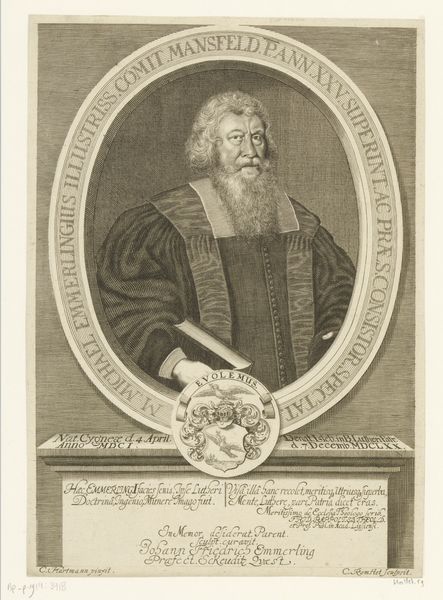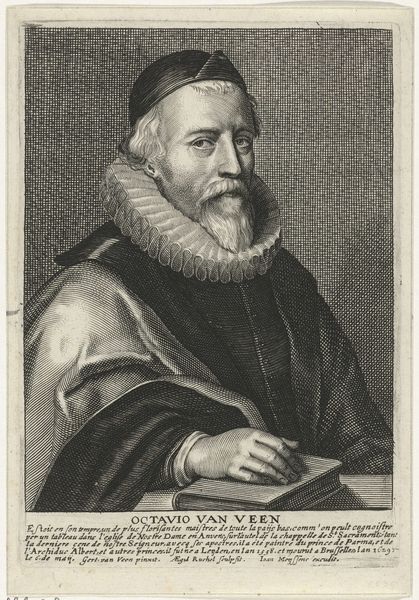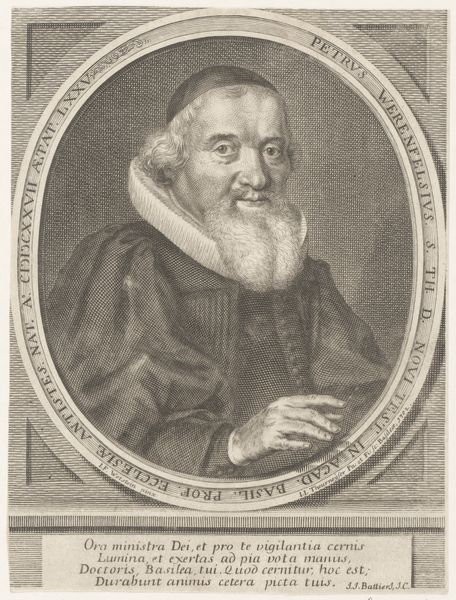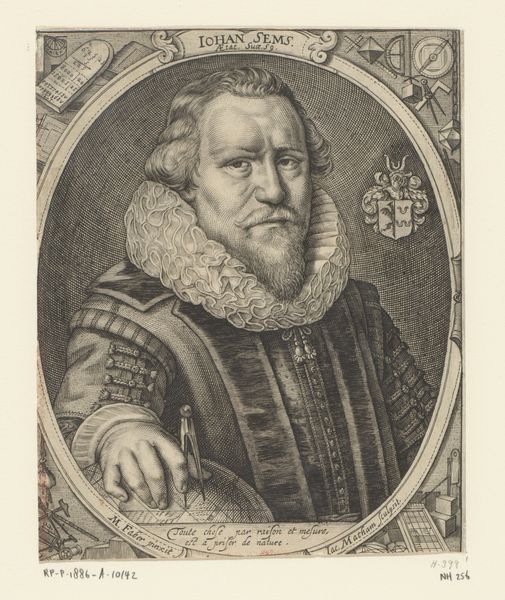
print, engraving
#
portrait
#
baroque
# print
#
engraving
Dimensions: 275 mm (height) x 187 mm (width) (bladmaal)
Curator: My goodness, what a study in character! Immediately I get a sense of quiet intensity from this engraving, with the deep, thoughtful shadows etched so finely... It's titled "Hans Svane." Editor: This engraving, placing the focus on Johannes Swaning, was created sometime between 1665 and 1672 by Albert Haelwegh. It is held at the SMK, the Statens Museum for Kunst. Beyond just the striking individual, though, these prints were potent political tools. Who was being memorialized, and why? Curator: Ah, see, I hadn’t immediately considered the power dynamic. My eye was drawn to the texture – the way Haelwegh captured the stiff ruff around his neck versus the soft fall of his beard. And the light! It gives him such presence, as if he might start speaking. But yes, engravings were a kind of currency then, weren’t they? Editor: Precisely. Consider the context: this is the Baroque era, a time of immense social and political upheaval. Depicting figures like Svane in such a dignified manner was a calculated act of enshrining power and reinforcing established hierarchies. How is he positioned? What about the use of Latin text at the bottom? Curator: Good point. He's seated, confident, almost... imperious. And the Latin is certainly designed to convey a sense of learned authority, isn’t it? I see how Haelwegh's technical skill is deployed not just to create a likeness, but to project an image of authority. Editor: Exactly. Who got to control the narrative, then as now, determined which figures entered—and how they entered—the cultural memory. So we have to ask ourselves, looking at this, whose voices were amplified and, more importantly, whose were silenced. Curator: I appreciate that, highlighting the context shifts how I perceive it – that contemplative gaze I found so appealing now feels imbued with something more, a sense of self-assuredness bordering on... dominance? Editor: It's that critical awareness, that refusal to accept images at face value, that makes art so powerful for me. It prompts us to reflect. Curator: Right, like holding a mirror not just to the subject, but to ourselves. Makes you think. Editor: It does.
Comments
No comments
Be the first to comment and join the conversation on the ultimate creative platform.
